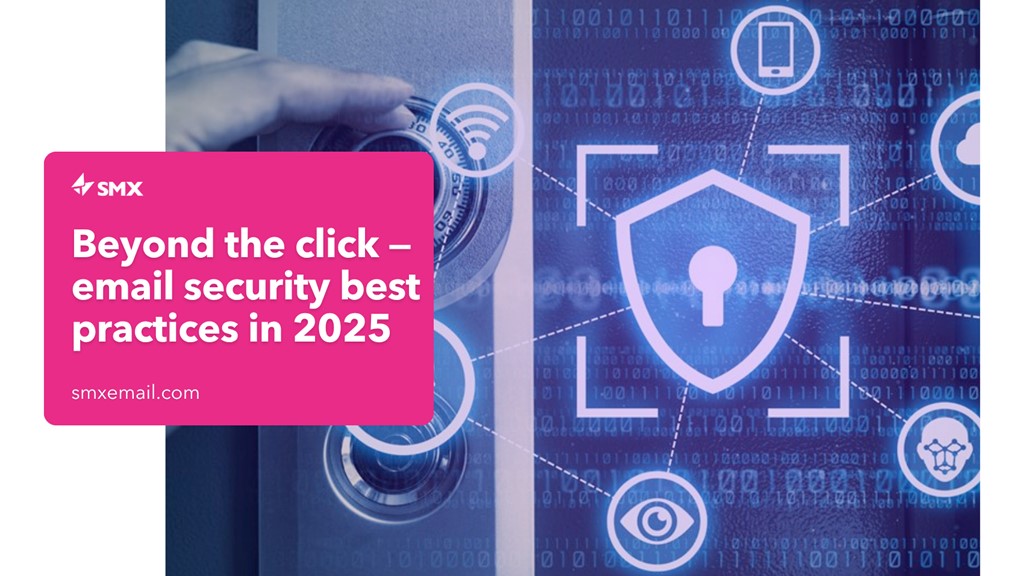Beyond the click — email security best practices in 2025 (CISO Edition)

Cyber threats have evolved. The old advice —"Just don’t click on weird links" —isn’t enough anymore. Attackers are smarter, more targeted, and relentless. As CISOs and security leaders, we know technology alone won’t keep us safe. The real defence? A security-aware team that can spot and stop attacks before they escalate. But security training can’t be a one-and-done checklist. It has to be a culture. A mindset. A habit. Here’s how to move beyond generic awareness programs and build a comprehensive security strategy for your organisation.
1. Phishing Training: go beyond the basics
Phishing isn’t just an occasional nuisance —it’s a business risk. And those outdated click-the-link simulations? They’re no longer enough. Instead, security training should be:
- Role-specific – Tailor training to different business units. Finance teams need to recognise invoice fraud; executives must be aware of whaling attacks.
- Data-driven – Track who’s engaging with phishing attempts and identify high-risk users.
2. Passwords and MFA: non-negotiables
Credential theft is still a top attack vector, and weak passwords make it easy for attackers to get in. Here are the basics:
- Use enterprise-grade password managers to enforce strong, unique passwords.
- Automate password audits to catch vulnerabilities before they’re exploited.
- Require Multi-Factor Authentication (MFA) everywhere —especially for email, cloud applications, and sensitive accounts.
Make strong authentication second nature for your organisation.
3. Email and Domain(s) Protection: secure your supply chain
Protecting sensitive information isn’t just about stopping data leaks —it’s about securing the very foundation of your email infrastructure. Attackers frequently exploit domain spoofing and email impersonation to bypass defences. That’s why email authentication protocols are critical:
- Enforce DMARC, SPF, and DKIM – Prevent attackers from spoofing your domain(s) and sending fraudulent emails on your behalf.
- Monitor DMARC reports – Gain visibility into who’s using your domain and catch unauthorised senders before they cause damage.
- Use multi-layer email security gateways – Filter out phishing attempts and malicious attachments before they reach inboxes.
- Implement outbound email protection – Ensure emails are encrypted and prevent accidental data leaks.
Security and protocols are critical for your attack surface —but just as important is how employees handle emails day-to-day. Even with the best security tools in place, a misaddressed email can still lead to major risks.
4. Email Etiquette: your first line of defence
A single misdirected email can lead to data exposure. That’s why email security isn’t just about blocking threats —it’s about working with people and preventing human error.
- Define clear email policies within your organisation.
- Reinforce good habits: Regularly remind teams of security best practices.
- Automate where possible: email archiving solutions can prevent costly mistakes.
These changes in behaviour can prevent big security incidents.
5. Device Security: lock down every endpoint
Your security perimeter doesn’t stop at the office. Whether an employee is working on a company-issued laptop or a personal phone, every device is a potential entry point.
- Deploy endpoint detection and response (EDR or EDTR).
- Use mobile device management to enforce security on personal devices.
- Automate and monitor patching to eliminate vulnerabilities before they’re exploited.
Remember, attackers don’t need to breach your network if they can breach an employee’s device. Secure everything.
6. Security Culture: train and make learning continuous
Cybercriminals don’t just rely on phishing —they exploit trust in every form. Security awareness isn’t just about recognising bad emails. It’s about recognising bad intentions in any form. Cybersecurity isn’t a one-time training. It’s an ongoing commitment.
- Provide quick-reference guides: Teach employees to verify identities before sharing sensitive information.
- Encourage instant reporting and have internal processes in place: If something feels off, employees should know exactly how and where to report it.
- Establish security champions across departments to advocate for best practices.
- Conduct regular security audits and adjust policies based on real-world advanced threats.
Keep up with emerging threats —attackers aren’t standing still, and neither should you.
Steps to consider for a smarter approach to email security
Your organisation isn’t just your workforce —they’re your frontline defenders. With the right training, tools, and mindset, they can become your strongest asset against email-based attacks. Cybersecurity isn’t just an IT concern. It’s a company-wide priority. Let’s build a culture where security is second nature —because when your teams are ready, your business is better protected. Email threats are evolving —your cybersecurity strategy should too.
Let’s talk. Contact us today to enhance your email security posture.